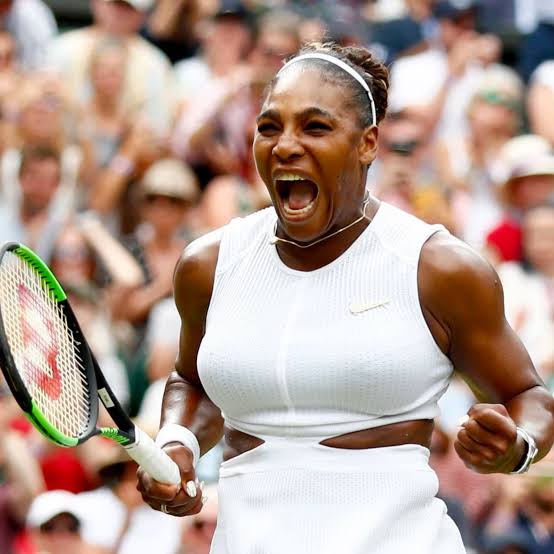
When it comes to tennis, Serena Williams is a name that transcends the sport itself. With 23 Grand Slam singles titles, countless doubles triumphs, and an aura of dominance that spanned over two decades, her legacy seems untouchable. But is Serena truly the greatest of all time (GOAT), or does her greatness fall into the realm of debate?
The world of sports has often crowned its champions with the title of “GOAT,” a phrase that comes with both reverence and scrutiny. For Serena, this conversation becomes more nuanced as her legacy intersects with evolving competition, changing dynamics in tennis, and the rise of other formidable players.
Unrivaled Dominance in Her Era
Serena Williams redefined what it meant to dominate tennis. Her powerful serves, athleticism, and mental resilience often left opponents scrambling for answers. From her first Grand Slam win at the 1999 US Open to her final appearance at the 2022 US Open, Serena’s consistency and ability to reinvent her game made her a force to be reckoned with.
Her record is a testament to her dominance: 73 WTA singles titles, 14 Grand Slam doubles titles (all with her sister Venus Williams), and four Olympic gold medals. Serena wasn’t just a player; she was an icon who transcended tennis, bringing unprecedented attention to the sport.
However, critics argue that dominance within an era doesn’t necessarily equate to being the GOAT. Tennis legends like Martina Navratilova, Steffi Graf, and Margaret Court have their own records that challenge Serena’s claim to the throne.
The Margaret Court Debate
One of the most cited arguments against Serena’s GOAT status is Margaret Court’s record of 24 Grand Slam singles titles—one more than Serena’s. On paper, Court holds the edge, but deeper analysis complicates the comparison.
Many of Court’s titles came during an era when the Australian Open, one of the four Grand Slams, was less competitive due to limited international participation. Moreover, the level of athleticism and skill in today’s game has evolved significantly, making Serena’s achievements arguably more impressive.
Serena herself addressed this debate, stating, “I would have loved to have played in [Court’s] era. But this is the era I was given, and I’ve done my best to dominate it.”
Beyond Titles: Cultural Impact
While numbers can tell part of the story, Serena’s influence on and off the court cements her legacy. She broke barriers as a Black woman in a predominantly white sport, inspiring countless athletes from underrepresented communities.
Her unapologetic confidence, advocacy for gender equality, and role as a mother who returned to elite competition after childbirth have made her a symbol of perseverance and empowerment. Serena’s legacy isn’t just about tennis; it’s about changing the narrative of what athletes can achieve.
Yet, critics argue that cultural impact, while important, shouldn’t weigh more heavily than pure tennis accomplishments. Detractors point out that players like Roger Federer and Rafael Nadal have similar cultural resonance alongside their stellar records, further muddying the GOAT debate.
A New Generation Challenges the Throne
The rise of younger players like Naomi Osaka, Iga Świątek, and Coco Gauff has added a fresh perspective to Serena’s legacy. These athletes, many of whom cite Serena as their inspiration, are carving their own paths in tennis.
Osaka, for instance, has already won four Grand Slam titles and displayed a level of dominance reminiscent of Serena’s early years. Gauff, at just 19, is rapidly climbing the ranks and showing the potential to rewrite the record books.
While Serena’s legacy has paved the way for these stars, their emergence raises the question: Will someone eventually surpass Serena’s greatness? If the GOAT title is meant to stand the test of time, it must hold up against future generations.
The Intangible Factor: Longevity
One area where Serena’s greatness is hard to contest is her longevity. Competing at the highest level for over two decades is no small feat, especially in a physically demanding sport like tennis.
Her ability to remain a top contender even after injuries, setbacks, and motherhood speaks volumes about her resilience. Few athletes in any sport have managed to maintain such a high level of excellence for so long.
However, some argue that longevity alone doesn’t make an athlete the greatest. Critics suggest that peaks—moments of pure, unmatched brilliance—matter more than sustained performance. In this regard, players like Steffi Graf, who achieved the Golden Slam (winning all four Grand Slams and an Olympic gold in a single year), could rival Serena’s legacy.
Conclusion: Is the GOAT Title Ever Settled?
The question of whether Serena Williams is the GOAT may never have a definitive answer. Tennis is a sport shaped by eras, each with its own challenges and champions. Comparing players across generations is inherently subjective, influenced by personal preferences and biases.
What is undeniable, however, is Serena’s unparalleled impact on tennis and beyond. She elevated the game, inspired millions, and redefined what it means to be a champion.
Whether or not she is universally recognized as the GOAT, Serena Williams’s legacy is secure. She remains a symbol of excellence, resilience, and inspiration—a true icon whose influence will continue to resonate for generations to come.
The debate over her place in history only adds to her mystique, ensuring that her name will forever be a cornerstone of tennis conversations. And perhaps that, more than any title, is the true mark of greatness.





